The Lyte Family
Agnes Maxwell Lyte
22 October 1871, in St George Hanover
Square, London, Middlesex, England
11 December 1871, at All Saints',
Margaret Street, London, Middlesex, England
Henry Churchill
Maxwell Lyte
Frances Fownes (Somerville) Lyte
1881:
41
Athelstone Road, Margate, Kent
Alice Anne Maxwell (Lyte) Hulton
31 January 1852, in Brixham, Devon,
England
22 February 1852, in Lower Brixham,
Devon, England
Farnham Maxwell
Lyte
Eleanora Julia (Bolton) Lyte
Francis Nevile Hulton on 20 June
1900 in Kensington
district, London, England
1881: Oak
Hill Road, Wandsworth, Surrey
1891: Finborough
Road, Kensington, London
Ann Maria Lyte
January 1821, in Sway (near
Lymington), Hampshire, England
Henry Francis Lyte
Anne
(Maxwell) Lyte
February 1821
Ann's father, Rev. Henry Francis
Lyte, wrote this poem in her memory:
Miscellaneous Poems pp182-6 (Henry Francis
Lyte, 1868)
A Recall
to my Child A.M.
JUNE 1, 1839
COME back, come back, my blessed child !
Come home, my own light-hearted !
Papa, they say, has rarely smiled
Since from his side you parted.—
That face which beams like opening day,
That laugh which never wearies ;
Why do they linger still away ?
Come home, dear girl, and cheer us !
I saunter sadly through my hours,—
They want one voice to mend them ;
A spell is o’er my drooping flowers,—
They pine for you to tend them.
The fairest now look all amiss,
Too dingy, or too flaunting.—
And are they changed ? ah, no, ’t is this—
The sweetest flower is wanting !
Young spring at last, despite the shocks
Of winter’s lingering bluster,
Has flung her mantle o’er our rocks,
And clothed our hills with lustre.
Music, and balm, and beauty play
In all around and o’er us.
‘Come, truant, come,’ all seem to say :
‘Come, join our happy chorus.’
‘Come,’ cries the cowslip’s fading bell ;
‘Come,’ cries the ripening cherry ;
‘Come, ere the bloom in every dell
Is turn’d to pod and berry ;
Come, ere the cuckoo change his tone ;
Ere from her nest the linnet,
With all her little ones, is flown,
And you’ve ne’er peep’d within it.’
The sun sets not so brightly now,
Across the golden water,
As when it gleam’d upon the brow
Of my loved absent daughter.
Home has no more its cheerful tone,
Its healthful hue about it :—
When from the lyre one chord is gone
The rest sound ill without it.
Come back ; the city’s flaunting crowd,
The concert’s formal measures,
The din of fashion, false and loud,
Are not like nature’s pleasures.—
These, these alone, the heart can touch,
Are simplest and sincerest.
You have an eye, a soul for such :
Come home, and share them, dearest.
Come, at my side, again to walk
Beside the fresh’ning billow.
Come, where the waves all night will talk
To you upon your pillow.
Come, where the skiff on sunny seas
For you is lightly riding ;
Where health and song in every breeze
My absent girl come chiding.
Come back ! we all from your glad eyes
New light and life will borrow.
’T is not papa alone that sighs,
‘Why leave me to my sorrow?’
Each, all, in your loved converse miss
Some wonted source of pleasure,
From look, or tone, or smile, or kiss :
Come home, come home, my treasure!
-
Dictionary of National Biography (entry for father Henry
Frances Lyte)
- Dictionary
of
National Biography (entry for father Henry Frances Lyte)
Anna Maria Maxwell (Lyte) Hogg
20 April 1822, at "Bramble Torr",
Dittisham, Devon, England
23 April 1822, in Dittisham, Devon, England
Henry Francis Lyte
Anne
(Maxwell) Lyte
John Roughton Hogg on 24
June 1846 in Lower Brixham, Devon, England
Gentleman's
Magazine September 1846 p314
June 24.
At Lower Brixham, the Rev. John Roughton Hogg, second son of the
late Rev. Jas. Hogg, Vicar of Geddington, Northamptonsh. to Anna Maria
Maxwell, only dau. of the Rev. Henry Francis Lyte, of Berryhead, near
Brixham, and granddau. of the late Rev. Wm. Maxwell, D.D., of Falkland,
co. Monaghan.
30 July 1889, at Berry Head House,
Brixham, Devon, England, aged 67
The Times, Monday, Aug 05, 1889; pg. 1; Issue
32769; col A
Death Notice
On Tuesday, 30 July after a very short illness
in her 68th year at Berry Head House, Brixham, Devon
Anna Maria Maxwell, widow of the late
Rev. John Roughton HOGG
and daughter of the late Rev. Henry Francis LYTE
2 August 1889, in Collaton St Mary churchyard, Devon,
England
proved 12 October 1889 (Prin. Reg., 832, 89), by Henrietta
Frances Maxwell Hogg and Anna Maria Maxwell Hogg, both of Berry Head,
Brixham, Devon, the daughters, two of the Executrixes.
1861: Mount Hermonel, Tormoham,
Devon
1871: "Sorrento", Lower Warberry Rd., Tormoham, Torquay, Devon; aged 48, a
widow and Landowner and farmer of 460 acres, employing 13 men, 3 women and 3
boys. Anna is living with two children, and 9 staff and servants.
Arthur Maxwell Lyte
10 April 1881, in St
George
Hanover Square district, Middlesex, England
5 May 1881, at All Saints, Margaret Street, London,
Middlesex, England Henry Churchill Maxwell Lyte
Frances Fownes (Somerville) Lyte
Eton College
Agnes E. R. Gore-Browne in
1919, in St
George
Hanover Square district, London, England
Ismay Nesta Pryce on 16 July 1925 in Forden
district, Montgomeryshire, Wales. Ismay was the daughter of Edward
Stisted Mostyn Pryce and Henrietta Mary Beauclerk.
Beatrice Katharine Maxwell (Lyte, Lewall) Tinne
23 June 1858, in Bagnères de Bigorre,
France
Farnham Maxwell Lyte
Eleanor Julia (Bolton) Lyte
Charles
Laird
James Albert Lewall on 20 March 1890, in St Mary's Priory, Chelsea,
London. Charles was of Buenos Ayres, Argentine Republic. He was born in June
1840 in Schloss Oberwerth, near Coblentz, Rhenish Prussia, the son of John
Charles Lewall, Doctor of Philosophy at the University of Jena 1838 and
Sarah Mary Bolton.
Herman W. Tinne in December
1922 in Westminster Cathedral, London, England
Milliner; Farmer
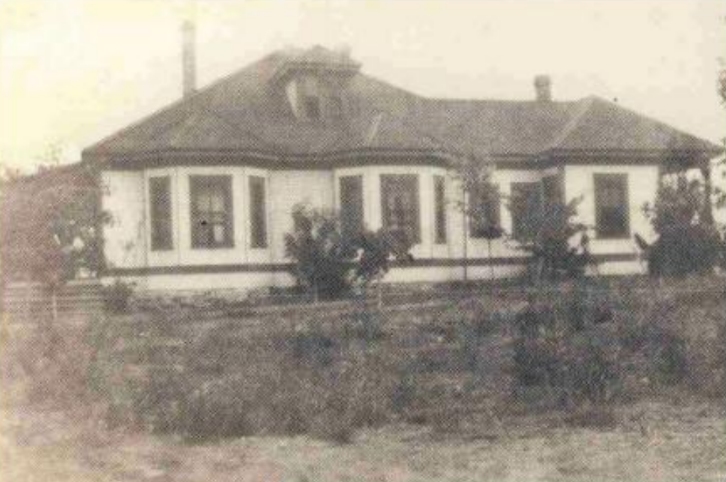 |
|
Beatrice Lewall's house on her farm "Butte
Ranch", one mile east of Ashcroft, British Columbia
|
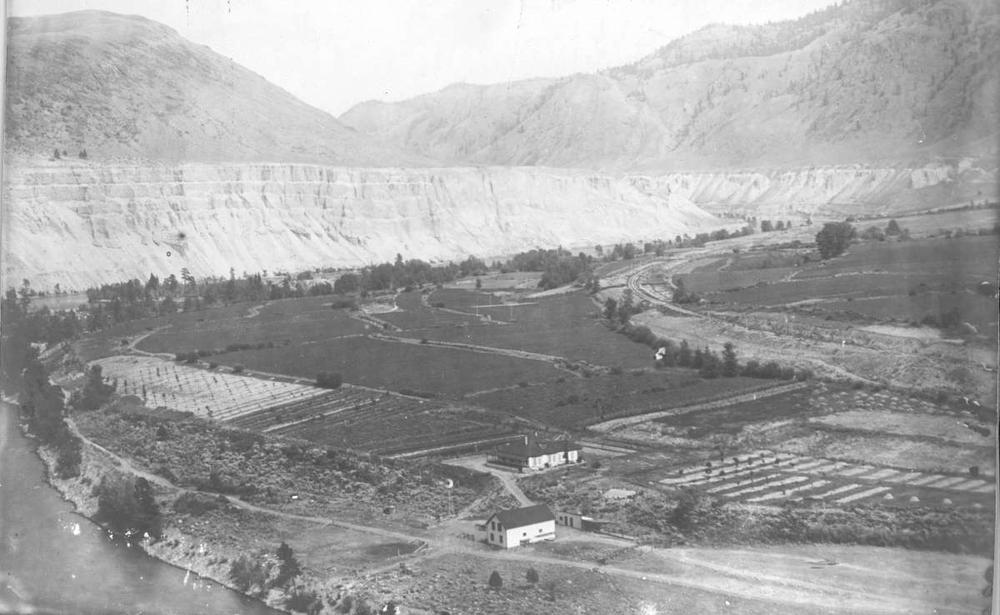 |
|
Beatrice Lewall's farm "Butte Ranch", one
mile east of Ashcroft, British Columbia
|
After the death of her first husband, Beatrice, then a widow with two sons,
dissolved her milliner partnership "Valeska" in Knightsbridge, London, and
emigrated to Canada in 1907, settling on a farm, :Butte Ranch", near
Ashcroft, British Columbia.
London
Gazette 14 August 1906 p5611
NOTICE
is hereby given, that the Partnership heretofore subsisting between us
the undersigned,Augusta Fanny Coore and Beatrice Lewall, carrying on
business as Milliners, at 30, St. George’s-place, Knightsbridge, in the
county of Middlesex, under the style or firm of “VALESKA,” has been
dissolved by mutual consent as and from the thirtieth day of June, 1906.
All debts due and owing to or by the said late firm will be received and
paid by the said Augusta Fanny Coore. And that in future such business
will be carried on by the said Augusta Fanny Coore.—Dated this thirtieth
day of July, 1906.
AUGUSTA FANNY
COOEE.
BEATRICE LEWALL.
BC Geographical
Names - Lewall Inlet
Bernard "Bunny" Lewall came to Canada in 1908
with his family to settle at Wallachine but one night was enough for his
mother to decide against the town. They moved west to Ashcroft and
purchased some land
LINK Magazine April 2018 pp38-40
(Association of BC Land Surveyors)
The Mystery of the J. Underhill Chisel
By Robert Allen, BCLS (Life Member); CLS (Ret'd)
... Part of the write-up for the geocache said “In 1909, Mrs. Lewell
[sic], a recent widow with two young sons also settled here. “Mrs. Lewell
[sic] has moved into her fine house which she had built on her land at the
Butte Ranch. The house, a modern ten room structure, was erected by Bob
Stoddard.” According to her son Bernard (Bill), “Mother had the house
designed around the carpetthat was to go in the living room.”
6 December 1937
Buenos Aires Herald 9 December 1837 p6
Beatrice Tinne, widow of H W Tinne, mother of J F
and B C Lewall, died 6 inst.
in Buenos Aires, Argentina
1881: Oak Hill
Road, Wandsworth, Surrey
1901:
Victoria Road, St Margaret & St John, London
1911:
Butte Ranch, East of Ashcroft, Yale-Caribou district, British Columbia
- Aged 22 in 1881 census
and 42 in 1901 census - both show her born in France; exact date and
place from Visitation
of
England and Wales vol 5 p156; 1911 census shows Beatrice
as aged 50, born in June 1860, in France.
- 1881 census
- England Marriage
Index (1Q1890 vol 1a p290); Visitation
of
England and Wales Vol 5 p156
- England Marriage
Index (4Q1922 St.Geo.Han.Sq vol 1a p1112); exact month and place from Kent & Sussex Courier 22 December 1922
- 1911 census
- Buenos
Aires Herald 9 December 1837 p6
- Jim Lewall
Cecil Henry Maxwell Lyte
 |
|
Signature of Cecil Henry Maxwell Lyte
|
26 August 1855, in Bagnères de
Bigorre, France
Farnham Maxwell Lyte
Eleanor Julia (Bolton) Lyte
Mary
Lucy
Agnes Stourton on 4 October 1894, in St Mary's Catholic Church,
Chelsea, London, England.
Mary was the daughter of Alfred
Joseph Stourton, 24th Baron Segrave and Mary
Margaret Corbally. Mary died on 11 October 1950.
Secretary of a Bank (1881)
26 January 1926
1881: Oak
Hill Road, Wandsworth, Surrey
1891: Finborough
Road, Kensington, London
1897: 7 Cyde Street, Redcliffe Square, London (Visitation
of
England and Wales Vol 5 p156 pub 1897)
1907: 1 Portman Mansions, York Place, London (The Plantagenet Roll of the Blood Royal: The Anne of
Exeter Volume p553 pub 1907)
Edith Maxwell Lyte
30 October 1872, in St George Hanover
Square, London, Middlesex, England
30 November 1872, at All Saints, Margaret Street, London,
Middlesex, England Henry Churchill Maxwell Lyte
Frances Fownes (Somerville) Lyte
Edith was evidently a friend of the
author Augustus Hare,
who left her a framed drawing of Civita Castellana in
his will, as well as the copyright of his books on Sussex and
Shropshire. Augustus also left Edith's mother, Frances two framed views of
St Peters and Torre dei Schiavi by Arthur Strutt.
1881:
41
Athelstone Road, Margate, Kent
Edward Maxwell Lyte
22 August 1844, in Gothenburg, Sweden
30 December 1844, in the English Church of the British
Legation (now St. Albans Church), Copenhagen, Denmark
Henry William Maxwell Lyte
Emily Prettyjohn (Popplestone) Lyte
Edward was an army officer. Hart's
Annual
Army List (1863) p335-6 lists Edward in the 61st (The South
Gloucestershire) Regiment of Foot, as an ensign with 1 year of service
(ensign as of 1 April 1862). He later became Captain and Adjutant of the 7th Dragoon
Guards
Bulletins
and Other State Intelligence p686 (1862)
61st Foot, Edward Maxwell Lyte, Gent., to
be Ensign, by purchase, vice James Alexander Rogerson, who retires. Dated
1st April 1862
3 March 1880, in Kensington
district, Middlesex, England, aged 36. The death record uses the
surname Maxwell-Lyte.
8 March 1880, in Brompton Cemetery,
London, England
None. Administration granted in the
Principal Registry 13 May 1880, to Emily Gooch of 41 Courtfield Gardens,
London, the mother and only next of kin.
1845: First Floor,
Kjøbmagergade corner Løvstræde, Frimands Kvarter, Copenhagen, Denmark
1851: Claremont
Terrace, St Heliers, Jersey, Channel Islands
Eleanora Gertrude Maxwell Lyte
11 February 1857, in Bagnères de
Bigorre, France
Farnham
Maxwell Lyte
Eleanora Julia (Bolton) Lyte
11 December 1864, in Bagnères de
Bigorre, France
Ellen Maxwell (Lyte) Hoey
22 February 1848, in St. Helier,
Jersey, Channel Islands
in St. Helier, Jersey, Channel
Islands
Henry William Maxwell Lyte
Emily Prettyjohn (Popplestone) Lyte
Clement
James
Hoey on 4 June 1869, in Leamington, Warwickshire, England
1851: Claremont
Terrace, St Heliers, Jersey, Channel Islands
Emily Anne Maxwell (Lyte) Steward
1841/2, in Gothenburg, Sweden
Henry William Maxwell Lyte
Emily Prettyjohn Popplestone
Thomas Burton Steward on 4 March
1862, in St. Leonard's, Sussex, England. (The place of St Leonards, Sussex,
is given in the Visitation. St Leonards is in Hastings district, while the
marriage was registered in Hailsham
district, Sussex).
Thomas, of Great Yarmouth, Norfolk, was the son of Arthur Steward of Great
Yarmouth, and Mary Burton. After Emily's death, Thomas married Anna Brown.
29 April 1867, in Great Yarmouth,
Norfolk, England, aged 25
at Bradwell, Suffolk, England
1845: First Floor,
Kjøbmagergade corner Løvstræde, Frimands Kvarter, Copenhagen, Denmark
1851: Claremont
Terrace, St Heliers, Jersey, Channel Islands
Ethel Frances Maxwell Lyte
19 June 1855, at Bradwell House,
Bradwell, Suffolk, England
25 November 1855, at Bradwell,
Suffolk, England
Henry William Maxwell Lyte
Emily Prettyjohn (Popplestone) Lyte
7 December 1855 in Mutford
district, Suffolk, England
14 December 1855, in Saint Nicholas
Churchyard, Church Walk, Bradwell, Suffolk, England
 |
|
Farnham Maxwell Lytec. 1850
|
 |
|
Farnham Maxwell Lyte in 1867
|
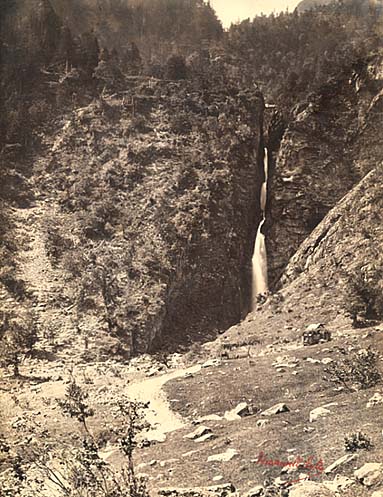
|
|
Cascade d'Enfer a Luchon, Pyrenees
photographed by Farnham Maxwell Lyte
|
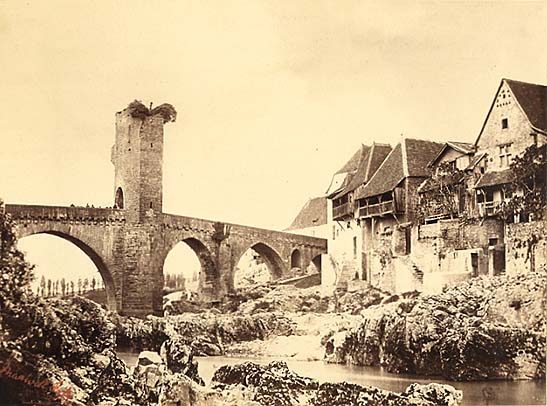
|
|
Pont d'Orthez, Basses-Pyrenees
photographed by Farnham Maxwell Lyte
|
 |
|
Signature of Farnham Maxwell Lyte
|
Farnham Maxwell Lyte
10 January 1828, in Brixham, Devon,
England
at Lower Brixham, Devon, England Henry Francis Lyte
Anne
(Maxwell) Lyte
Christs College, Cambridge, which
he entered in 1846, obtaining a B.A. in 1851 and an M.A. in 1863.
Alumni Cantabrigiensis:
Adm. pens. at
CHRIST'S, May 6, 1846. S. of the Rev. Henry Francis [B.A., Dublin, 1814,
author of "Abide with me," for whom see D.N.B.]. B. Jan. 10, 1827, at
Brixham, Devon. Matric. Michs. 1846; B.A. 1851; M.A. 1863. Associate,
Society of Civil Engineers; Fellow of the Chemical Society. One of the
early workers in photography, 1854-70, inventing the (so-called) "honey"
process; originated the borax and phosphate toning-baths still in use,
and introduced the use of iodide. Hon. Fellow of the Royal Photographic
Society. Member of the Fellowship of the Order of Merit of Frederick
Francis, Grand-Duke of Mecklenburg-Schwerin. Married, 1851, Eleanor
Julia, dau. of Cornelius H. Bolton, of Faithlegg, Co. Waterford, and had
issue. Resided in France, because of ill-health, 1853-80, being well
known at Baguères in the Pyrenees, where he engaged in meteorological
observations. Bought a salt-mine which was unsuccessful. Died suddenly,
Mar. 4, 1906, aged 79; buried at St Mary Boltons, Kensington. (Peile,
II. 496; The Times, Mar. 6, 1906.)
Eleanora Julia Bolton on 6 February 1851, in Norton
Fitzwarren, Somerset, England.
Eleanora was born on 11 June 1828, in Trull, Somerset, the daughter of
Cornelius Henry Bolton, of Faithlegg, county Waterford, Ireland, and Alicia
Sutton. Eleanora died on 7 November 1896 in Kensington
district, London, aged 68, and was buried in Brompton Cemetery,
London.
Census:
1851: Claremont
Terrace, St Heliers, Jersey, Channel Islands
1881: Oak Hill
Road, Wandsworth, Surrey
1891: Finborough
Road, Kensington, London
Civil Engineer (1871); Mining
Engineer (1881); Analytical Chemist (1891)
Although a mining engineer by trade, Farnham Maxwell Lyte is
best remembered as a pioneer of several photographic techniques. He lived in
France from 1852 until 1880, for health reasons, moving first to Luz and
later to the southwestern town of Pau, where he encountered the group of
photographers, including John Stewart and Jean-Jacques Heilmann, who worked
in that area. All his known views are of the Pyrenees.
Lyte was responsible for several technical innovations, including a
technique for printing skies, improved methods of working with collodion and
waxed paper, and a process he called metagelatin, which was adopted by
several of his peers. He helped to found the Société française de
photographie and was a member of the Photographic Society of Great Britain.
Lyte exhibited frequently in the 1850s-60s, receiving several international
medals and awards for his work. In 2000, a photograph, ‘A Chateau on
Pauprice,’ by Farnham Maxwell Lyte sold at auction for $5,875. Twenty other
landscape and cityscape photographs by Farnham Maxwell Lyte are posted
on the website of the National Gallery of Canada.
4 March 1906, in Kensington
district, London, England, aged 78
St Mary Boltons, Kensington, London,
England
1851: Claremont
Terrace, St Heliers, Jersey, Channel Islands
1871: Hoddesdon,
Great Amwell, Hertfordshire
1881: Oak Hill
Road, Wandsworth, Surrey
1891: Finborough
Road, Kensington, London
1897: 60 Finborough Road, South Kensington, London (Visitation
of
England and Wales Vol 5 p156 pub 1897)
Henry Francis Lyte
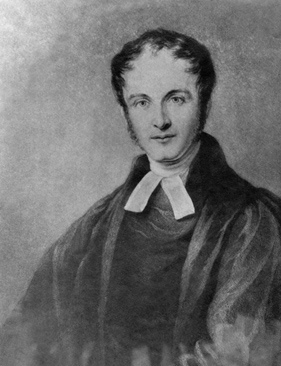
|
|
Henry Francis Lyte
|
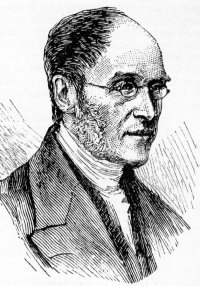 |
|
Henry Francis Lyte
|
 |
|
Signature of Henry Francis Lyte
|
1 June 1793, at The Cottage, Ednam,
Roxburghshire, Scotland
13 June 1793, at Ednam, Roxburghshire, Scotland
Thomas Lyte
Anna Maria (Oliver) Lyte
Portora Royal School, Eniskillen, Ireland, then Trinity
College Dublin which he entered in 1811. Henry graduated BA in February
1814, and M.A. in 1820. He was admitted ad eundem at Oxford on 10
June 1834.
Alumni Dublinenses
p521 (ed. G. D. Burtchaeli and T. U. Sadlier, 1935)
LYTE, HENRY
FRANCIS, Siz. (Dr Burrowes), May 29, 1809, aged 16; s. of Thomas,
Centurio. [N.F.P.] Sch. 1813.
B.A. Vern. 1814. M.A. Æst. 1820. See D.
N. B., Foster, and Allibone.
Alumni Oxonienses 1715-1886 vol 3&4 p887
Lyte,
Henry Francis, scholar TRINITY COLL.,
Dublin, 1813 (B.A. 1814, M.A. 1830) : adm. ‘ad eundem’ 10 June 1834,
perp. curate Lower Brixham, Devon, 1826, until his death at Nice 20 Nov
1847, author of a metrical version of the Psalms, etc., and of the hymn
‘Abide with me,’ etc.
Anne
Maxwell on 21 January 1818, at Queen Square Chapel, Bath, Somerset,
England.
Henry was curate at Marazion in Cornwall when he met Anne Maxwell, who was
staying there with a maiden aunt due to her ill health.
Clergyman. Henry was ordained
deacon on 18 December 1814. His first curacy was in Taghmo in county
Wexford, where he stayed for eighteen months, but his frequent attacks of
asthma led him to resign this post. He then travelled through France on
horseback from September 1816 to summer 1817. After his return to England,
Lyte was moved from one curacy to another before eventually being given a
position at the chapel of ease in Marazion in Cornwall, on 24 June 1817. In
January 1820 the family left for Sway (near Lymington), Hampshire, to live
in temporary retirement. Early in 1822 the family moved to Dittisham, Devon.
Henry held no full-time position at Dittisham, but while there he was asked
to do temporary duty at the chapel of ease at Lower Brixham. In May 1822 he
was invited by the trustees of the chapel to remain at Brixham permanently.
He refused, and went instead to Charleton in Devonshire where he became
curate on 6 July 1822. He stayed for almost two years, before moving back to
Brixham in April 1824. Lyte began by ministering in two churches, St Mary's
Church, Brixham, and the new district church of Lower Brixham. He joined the
schools committee, and by June 1824 had become its chairman. He took a keen
interest in the development of education, and in addition to conducting
annual school examinations he established the first Sunday school in the
Torbay area; he also undertook to teach in his recently established Sailors'
Sunday School. Six-foot-two tall, he was a Pied Piper to the local children,
of whom he mustered more than 700 in his Sunday School, which boasted a
staff of 80. On 13 July 1826, Henry was instituted as the first incumbent of
All Saints Church in Lower Brixham, a post he held for the remaining 23
years of his life, and in which he was followed by his son-in-law Rev. John
R. Hogg
Henry is best remembered as the author of the hymns Praise
my soul the King of Heaven and most famously Abide With Me the first verse of which is:
Abide with me; fast falls the eventide;
The darkness deepens; Lord with me abide.
When other helpers fail and comforts flee,
Help of the helpless, O abide with me.
The hymn is traditionally sung at Wembley before the FA Cup final,
originally at the suggestion of King George V, whose favourite hymn it was
reputed to be. Henry also wrote a number of poems, some of which were
published as Miscellaneous Poems by Henry Francis Lyte,
Poems:
Chiefly
Religious and The
Poetical
Works of the Rev. H. F. Lyte
After their marriage, Henry and Anne
lived at Nevada House, Fore Street, in Marazion. In Dittisham the family
lived in Bramble Torr, a house situated on a branch of the river Dart about
a mile from Dittisham. In Brixham, Anne and Henry lived initially in the
town, in Burton House on Burton Street. The house backed against cliffs and
fronted directly onto the street. This was hardly ideal for a growing
family, and in 1834 they moved out of town to
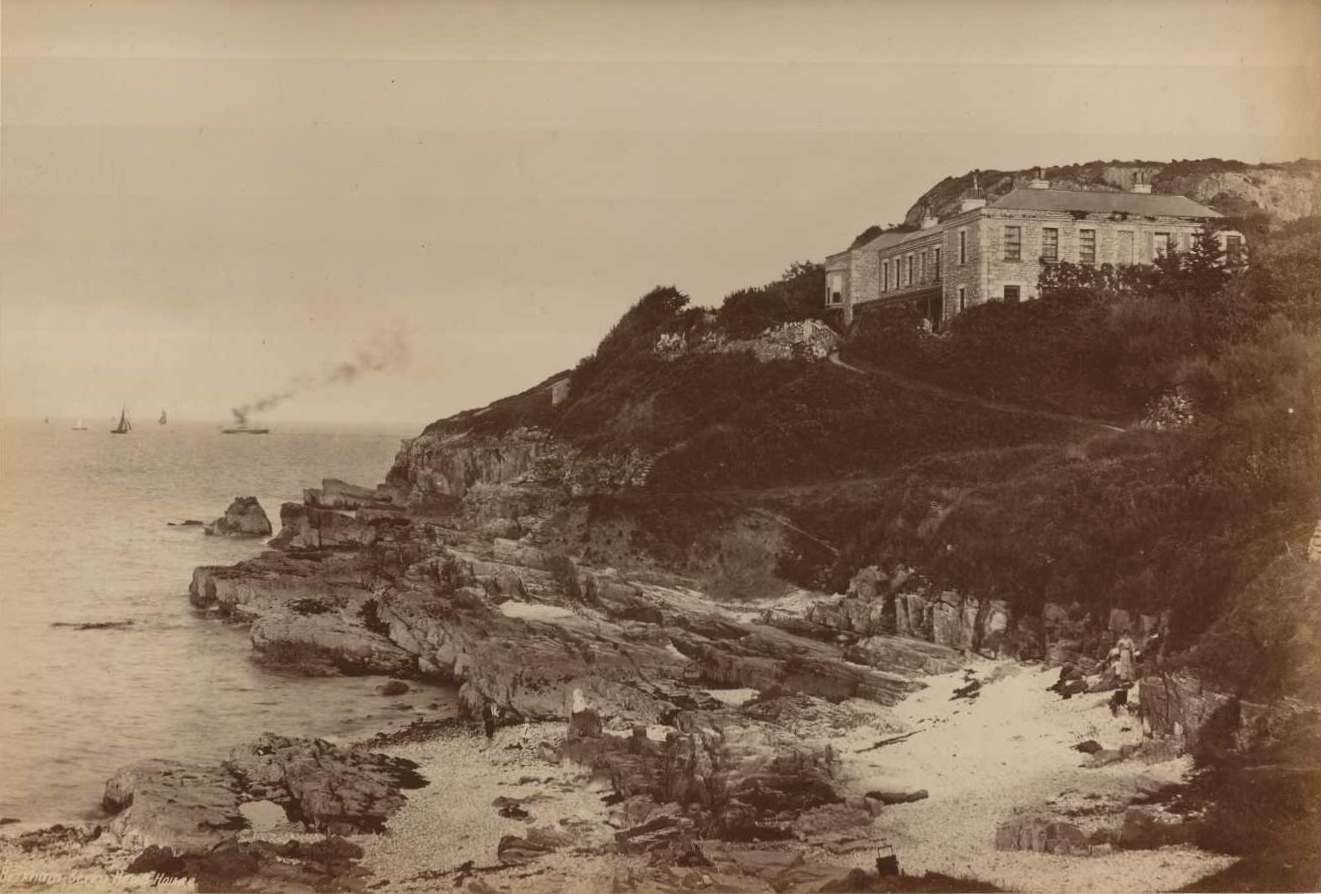 |
|
Berry Head House in Brixham, Devon
|
Berry Head House, a former military hospital, where there was vastly more
space. The legend is that Berry Head House was simply given to Henry Lyte by
King William IV, supposedly because he was so impressed with arrangements
made by Reverend Lyte for a Royal visit to commemorate the arrival of
William Prince of Orange at Brixham in 1688. A more prosaic account is that
Henry leased Berry Head from its builder, Roger Hyne who built it as a
military hospital for the Board of Ordinance in 1809, and had leased it back
from the board in 1823 after the conclusion of the Napoleonic Wars.
Certainly Henry owned the house rather than leasing it - it remained in his
family until 1949. It was during the Rev. Lyte's tenure that his gardeners
uncovered human remains in the area west of the building known as the Dell,
now a lawn. Henry Francis being a man of the cloth immediately instructed
his gardeners to intern the remains and arranged for the erection of a small
memorial bearing the inscription 'To the unknown dead'. Likely the remains
were related to the house's former use as a hospital. The Lyte household
grew to eleven staff plus a tutor and curate, many of whom lived in. With a
stipend of only £140 per year, Henry Francis Lyte's own private income was
essential to subsidise this high standard of living, as well as his journeys
to continental Europe. One of the ways the vicar supplemented his income was
by educating "the wayward sons of nobility" alongside his own children. One
of these wayward sons was later to become Lord Salisbury, three times Prime
Minister in the Victorian era.
During the 1840s Lyte spent increasing periods abroad. First he holidayed in
Norway in the summer of 1842. He then decided to spend the winter of 1844 in
Naples, but his progress was hampered by illness, and he spent considerably
more time abroad than he had wished; finally he returned to England in May
1846. By August he was off to the continent again, intending to winter in
Rome; he ended up staying until May 1847, and returned to England in June,
in very poor health. He spent the summer at Berry Head, where he wrote Abide with Me. He left for the continent again on
1 October 1847. By 5 November he had reached Nice, where he was seized by
influenza and dysentery, and he died there on 20 November.
Henry was an ardent and scholarly collector of antique religious books: the
library of 4,500 books he had amassed with his son's help took 16 days to
auction in London after his death, its sale catalogue, marked with the price
obtained for each item, is still to be seen in the National Library today.
Dictionary of National Biography vol 34 pp365-6
(Sidney Lee, 1893)
LYTE,
HENRY FRANCIS (1793-1847), hymn-writer, born at Ednam, near Kelso,
Roxburghshire, 1 June 1793, was second son of Captain Thomas Lyte, and a
lineal descendant of Henry Lyte [q. v.] and Thomas Lyte [q. v.] He was
educated at Portora (the royal school of Enniskillen) in Ireland, and at
Trinity College, Dublin, where he became scholar in 1813, and competed
successfully for three prize poems in three successive years. Abandoning
an intention of entering the medical profession, he took holy orders,
and in 1815 he was made curate of Taghmon, near Wexford. Ill-health led
him to resign this post, and after a visit to the continent he went to
Marazion, Cornwall, where he married Anne, daughter and eventual heiress
of the Rev. W. Maxwell, D.D. of Falkland, co. Monaghan, who wrote the
twenty-fourth chapter of Boswell's ‘Life of Johnson.’ Subsequently he
held the curacies of Lymington, Hampshire, where much of his verse was
written, and of Charlton, Devonshire. At Lower Brixham he laboured for
twenty-five years in charge of a new parish. His health compelled him to
make frequent foreign tours. He died on 20 Nov. 1847 at Nice, where his
grave, in the English cemetery, is marked by a marble cross. A portrait
by John King (1788-1847) [q. v.] was engraved by Phillips. In
conjunction with his son, J. W. Maxwell Lyte, he formed a very extensive
library, chiefly of theology and old English poetry, the sale of which
in London in 1848 occupied seventeen days.
Lyte is chiefly remembered for his hymns. The best known are
‘Abide with me, fast falls the eventide,’ and ‘Pleasant are Thy courts
above:’ but others, like ‘Far from my heavenly home,’ ‘Jesus, I my cross
have taken' (sometimes erroneously attributed to James Montgomery), and
‘Praise, my soul, the King of heaven,’ are of acknowledged excellence.
All these appear in most hymnals. Two of Lyte's secular poems—‘On a
Naval Officer’ and ‘The Poet's Plea’—are remarkable for their true
poetic feeling. The former was set to music by Sir Arthur Sullivan. The
earliest volume of Lyte's poems, ‘Tales in Verse,’ written at Lymington,
appeared in 1826, and reached a second edition. Wilson, reviewing this
book in the ‘Noctes Ambrosianæ,’ justly characterised Lyte's verse as
‘the right kind of religious poetry.’ Some of his hymns were first
published by him in his ‘Poems chiefly Religious’ (London, 1833); others
in his ‘Spirit of the Psalms,’ a metrical version of the Psalter (London
1834) which passed through several editions. A volume of ‘Remains,’
consisting of poems, sermons, and letters, with a prefatory memoir by
his daughter, was published in London in 1850; and the verse in this and
in ‘Poems chiefly Religious’ was reprinted under the title of
‘Miscellaneous Poems,’ London, 1868. Lyte also wrote the appreciative
‘Biographical Sketch of Henry Vaughan,’ prefixed to the latter's ‘Sacred
Poems,’ London, 1847.
[Remains with memoir, as above: Julian's Dictionary of Hymnology,
with authorities there given; Ashwell's Life of Bishop Wiberforce;
Holland's Psalmists of Great Britain, ii. 344; Miller's Singers and
Songs of the Christian Church; Notes and Queries, 2nd ser. vii. pp. 10,
182; Edinburgh Review, lix. 171-82; Dean Hole's Memories (1893), pp. 74
sq.] J. C. H.
20 November 1847, at the Hotel de la
Pension Anglaise, Nice, France
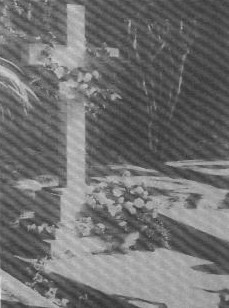 |
|
The grave of Henry Francis Lyte in the
English cemetery of Holy Trinity Church, in Nice, France
|
22 November 1847, in the English
cemetery of Holy Trinity Church, in Nice, France.
A white cross, standing on a flat slab, marks his grave and the memorial
reads:-
Here rests the
mortal remains of the
Revd. Henry Francis Lyte, MA
for 23 years Minister of Lower Brixham
in the County of Devon.
Born on the 1st June, 1793,
died on the 20th November, 1847.
"God forbid that I should glory save
in the cross of our Lord Jesus Christ." Gal. 6-14.
A memorial tablet to Henry Frances Lyte was placed in Westminster Abbey in
1947.
Dated 22 April 1847, proved (P.C.C., 328, 48) 27 April 1848,
by Anne Lyte, the relict, the sole Executrix
Arms: Gules, a chevron between three swans argent.
Crest: On a trumpet or, a swan, wings expanded, argent.
Motto: Laetitia et spe immortalitatis
Henry William Maxwell Lyte
29 September 1818, at Nevada House,
Fore Street, Marazion, Cornwall, England
25 December 1818, at St. Hilary,
Marazion, Cornwall, England
Henry Francis Lyte
Anne (Maxwell) Lyte
Christ Church College, Oxford.
Henry matriculated on 20 October 1836, aged 18.
Emily Prettyjohn Popplestone on 13 June 1843 at the
English Church of the British Legation (now St. Albans Church), Copenhagen,
Denmark. Emily is recorded as a spinster of Loddiswell, Devon.
Emily was the daughter of Edward Prettyjohn, of Ganston, Devon, and Susan,
the daughter of John Popplestone. She was born on 17 February 1822 in
Loddiswell, Devon, and baptised at Loddiswell. After Henry's death, Emily
married Watson Gooch, of Great Yarmouth, Norfolk, on 22 September 1858.
Census:
1851: Claremont
Terrace, St Heliers, Jersey, Channel Islands
3 June 1856, in Great Yarmouth,
Norfolk, England, aged 37. Henry left Emily with an income of £500 per
annum.
The Gentleman's Magazine (July 1856) p125:
OBITUARY
June 3
At Great Yarmouth, aged 37, Henry William Maxwell Lyte, esq., eldest son
of the late Rev. H. J. Lyte, Birsham, Devon; and of his wife, Anna, dau.
of the Rev. H. Maxwell, D.D., Falkland, county Monaghan.
7 June 1856, in Saint Nicholas Churchyard, Church Walk,
Bradwell, Suffolk, England, aged 38
dated 26 January 1856, proved (P.C.C.,
484, 56) 23 June 1856, by Emily Lyte, the relict, and Charles Henry Mundy,
the Executors
The tale of Henry's scandalous romance with Emily
Popplestone and the resultant sad family rift is well told in the March 2006
newsletter of St Albans Church in Copenhagen. The article, based on
information provided by B.E.N. Lyte of Caythorpe, Lincolnshire, reads in
part:
"Returning to Brixham in about 1840, his parents became concerned that
Henry William had formed an attachment to a local girl, Emily Prettyjohn
Poppelstone. For those of us used to life in the 21st century, 19th
century conventions are hard to appreciate, and especially the rigid
social barriers that then existed between 'gentlefolk' and the 'sons and
daughters of toil'. Emily was said to be the daughter of a turnpike keeper
(at the lower end of the social scale), and thus was a most unsuitable
companion for the eldest son of an aristocratic family. Emily's family
were doubtless equally worried for their daughter.
There was unhappiness and resistance, until in the end love took its own
course, and in December 1842 Emily gave birth to a son, named Henry
Maxwell Lyte. This caused enormous shock and scandal, and led to a break
between Henry William and his parents. The departure of the couple to
Copenhagen was discretely arranged" and the couple were married there
in June 1843. Henry and Emily remained in Copenhagen for the next few years,
but returned to his parents' house at Berry Head House in Brixham in early
1847, no doubt related to the illness of Henry's father, Henry Francis Lyte,
who died of tuberculosis later that year, after which Henry and his family
returned permanently to England.
1845: First Floor,
Kjøbmagergade corner Løvstræde, Frimands Kvarter, Copenhagen, Denmark
1851: Claremont
Terrace, St Heliers, Jersey, Channel Islands
Henry Maxwell Lyte
1841
Henry William Maxwell Lyte
Emily Prettyjohn Popplestone
27 June 1844, in St Petri,
Copenhagen, Denmark, aged 2½.
Henry Churchill Maxwell Lyte
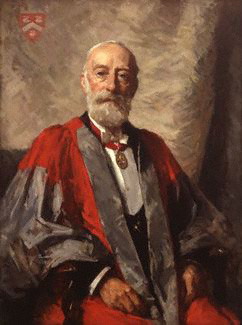
|
Henry Churchill Maxwell Lyte (1933)
image from wikipedia
of a painting in the National Portrait Gallery |
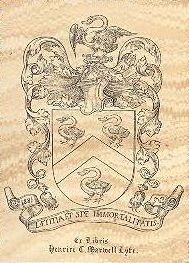
|
|
Ex libris stamp of Henry Churchill
Maxwell Lyte, showing his coat of arms
|
 |
|
Signature of Henry Churchill Maxwell Lyte
|
Sir Henry Churchill Maxwell Lyte, KCB
29 May 1848, at 1
Hyde Park Place, London, Middlesex, England
22 July 1848 in St John's,
Southwick Crescent, London, Middlesex, England
John Walker
Maxwell Lyte
Emily Jeannette (Craigie) Lyte
After preparatory school at Geddington,
Northamptonshire, Henry was educated at Eton College (1861-1866) and Christ
Church, Oxford (1866-1870), where he matriculated on 23 May 1866, aged 17,
and graduated with a B.A. in the school of law and modern history in 1870,
and an M.A. in 1873. In 1929 he received the honorary degree of LittD from
the University of Oxford.
Frances Fownes Somerville on 3 January 1871, in Wells
district, Somerset, England. Frances was born on 17 July 1847, in
Wells, Somerset, the daughter of James Curtis Somerville, of Dinder
House, Somerset, and Emily Periam Hood, the daughter of Sir Alexander
Wood, Bart, of Butleigh Wooton, Somerset, M.P. Frances was baptised at
Dinder on 21 August 1847.
Historian.
Henry was appointed Deputy Keeper of Public Records 1886 and a Royal
Commissioner for Historic Manuscripts a month later. He was also a noted
author, his works including the History of Eton College published in 1875
and A
History of the University of Oxford from the earliest times until 1530
published in 1886, and Dunster and its Lords
28 October 1940, at Dinder House, Somerset, England
Dinder, Somerset, England
Henry is found in Who's Who 1898 edited by
Douglas Sladen (published by Adam & Charles Black, Soho Square, London,
1898) page 534:
LYTE, Sir Henry Churchill Maxwell-, K.C.B.; cr. 1897 ;
M.A., F.S.A.; Deputy Keeper of the Records and Historical MSS.
Commissioner, 1886 ; b. London, 29 May 1848; s. of J. W.
Maxwell-Lyte, Berry Head, Devon; g.s. of Rev. H. F. Lyte, author
of Abide with Me ; m. Frances Fownes, d. of J. C.
Somerville, J.P., D.L., Dinder House, Somerset, 1871. Educ.: Eton
; Christ Church, Oxford. Inspector for Historical MSS. Commission
for several years. Publications: History of Eton College,
1877, 1889; History of the University of Oxford, 1886; Dunster and its
Lords, 1882 ; various Reports for Historical MSS. Commission; editor of
various publications issued by Public Record Office. Recreations:
travel, photography. Address: 3 Portman Square, W.;
Public Record Office, Chancery Lane, W.C. Club: Athenaeum.
A more extensive entry is found in Men and Women of
the Time: A Dictionary of Contemporaries edited by Victor Plarr
(published by George Routledge and Sons, Ludgate Hill, London, 1899) page
685:
LYTE, Sir Henry Churchill Maxwell, K.C.B., F.S.A.,
Deputy-Keeper of the Records, Royal Commissioner on Historical MSS, is the
son of the late J. W. Maxwell Lyte, Esq., grandson of the Rev. H. F. Lyte,
the well-known hymnwriter, and the representative of the families of Lyte
of Lytescary, co. Somerset, and Maxwell of Falkland, co. Monaghan.
He was born in London on May 29, 1848, and educated at Eton and
Christ Church, Oxford, where he took honours in Law and History and became
M.A. In 1875 he published a ‘History of Eton College,’ of which a
new edition, revised and enlarged, was issued in 1889. In 1880 and
1881 he contributed to the Archeological Journal a series of
papers on ‘Dunster and its Lords,’ which was afterwards reprinted with
additions as a volume for private circulation. This was followed, in
1886, by a ‘History of the University of Oxford from the earliest times to
the year 1530.’ In the meanwhile Mr Maxwell Lyte had been acting for
some years as an Inspector for the Historical Manuscripts Commission.
Reports by him on the Collections of the Dean and Chapter of St.
Paul’s, the Duke of Rutland, and upwards of twenty other owners, have at
different times been presented to Parliament. In January 1886 he was
appointed Deputy-Keeper of the Records, in succession to the late Sir
William Hardy, and as such was entrusted with the direction of all
official publications and arrangements connected with the national
archives, upon which he presents an annual report. In the following
month he was nominated one of the Royal Commissioners on Historical
Manuscripts. He was made C.B. in January 1889, and a K.C.B. in 1897.
He married, in 1871, Frances Fownes, daughter of the late J. C.
Somerville, Esq., of Dinder, co. Somerset. Addresses : 3 Portman Square,
W. ; and Athenæum.
Entry in Walford's County Families of the UK, 1899
reads:
Lyte, Sir Henry Churchill Maxwell, KCB Cr. 1897
Only son the the late John Walker Maxwell Lyte, esq, of Berry Head, Devon,
by Emily, Jeannetta, dau, of Col John Craigle, of the E.I.C.S. ;
b. 1849 ; m. 1871 Frances Fownes, dau. of James Curtis Somervile, Esq, of
Dindar House, Somerset.
Educated at Eton, and Ch. Ch. Oxford (BA 1870, MA 1873).
Appointed Deputy Keeper of Public Records 1886 ; and a Royal Commissioner
for Historic Manuscripts 1886.
Portman Square, W1. Atheneum Club.
1861: St George Hanover Square, London: Henry C M Lyte, age 12 b.
Paddington, Middlesex (RG9 46 F40 p13)
1897: 3 Portman Square, London (Visitation
of
England and Wales Vol 5 p155 pub 1897)
1914: 61 Warwick Square, London (attestation
paper of James Farnham Lewall)
- 1861 census; exact date
from Who's Who 1898; exact place from Dictionary of National Biography
- Visitation
of
England and Wales Vol 5 p155
- Alumni
Oxoniensis; Walford's County Families
of the UK, 1899; Dictionary of
National Biography
- England Marriage
Index (1Q1871 vol 5c p809); exact date from Dictionary
of National Biography; Frances details from Visitation
of
England and Wales Vol 5 p155
- Dictionary
of National Biography
- Dictionary
of National Biography
Ida Mary Maxwell Lyte
19 April 1854, in Pau, France
privately, in Pau, France
Farnham
Maxwell Lyte
Eleanora Julia (Bolton) Lyte
Nun
1881:
"Convent
Of Saint Francis", Taunton, Somerset
John Walker Maxwell Lyte
 |
|
Signature of John Walker Maxwell Lyte
|
2 January 1825
14 July 1825, in Brixham, Devon,
England
Henry Francis Lyte
Anne (Maxwell) Lyte
New College, Oxford; Gentleman Commoner of New College,
Oxford, matriculated 30 June 1843, aged 18
Emily Jeannette M. Craigie, on 22 June 1847, in St
George's, Hanover Square, London, Middlesex, England. Emily was the daughter
of Col. John Craigie of the East India Company and Emily (Churchill)
Craigie. Emily was born on 11 December 1824, near Calcutta, India. She
married, secondly, Frederick Charles Maitland on 8 February 1873 at Christ
Church, Mayfair, London. she died on 6 January 1890, and was buried in
Brompton Cemetery on 9 January 1890. Her will, dated, 17 March 1886, was
proved (Prin. Reg., 165, 90) on 12 February 1890, by Frederick Charles
Maitland of 55 Curzon Street, Mayfair, and Henry Churchill Maxwell Lyte of 3
portman Square, Middlesex, C.B., the son, the Executors.
1861: St George Hanover Square, Middlesex; Fundholder
1881:
55
Curzon Street, London, Middlesex
28 July 1848, in Bath, Somerset,
England. His obituary in The Gentleman's Magazine
(Jul-Dec 1848) p331 reads:
July 28
At Bath, John Walker Maxwell Lyte, esq. of Berry-head, Brixham.
2 August 1848, in Bath, Somerset, England
Administration granted in the
Provincial Court of Canterbury 20 October 1848, to Emily Jeanette Lyte, the
relect.
John Walker Maxwell Lyte
Reverend
20 June 1850, in St. Helier, Jersey, Channel Islands
Henry William Maxwell Lyte
Emily Prettyjohn (Popplestone) Lyte
Winchester College;
non-collegiate of Oxford Univeristy, matriculated 10 April 1869, aged 18,
Commoner of Magdelan College, Oxford, 1869, B.A. 1873, M.A. 1875
Winchester
College Register (1907) p182
LYTE, JOHN WALKER MAXWELL- (C), b. 20 June, 1850, bro. of the next.
Magd. Coll. Oxon 1869, 4
Theol. B.A. 1873, M.A. 1875; D.
O., d
and p 1874, C. Biggleswade
1874-7, St Peter's, Eaton Sq. 1877-83, Chapl. to Bishop of Truro 1883-7. D 28 Jan., 1887.
(C) indicates that John lived in Southgate Hill house
Clergyman. C. Biggleswade
1874-7, St Peter's Eaton Sq. 1877-83, Chaplain to Bishop of Truro 1883-7.
28 January 1887, at Lis Escop, Truro,
Cornwall, England, aged 36
2 February 1887, in Truro, Cornwall,
England
dated 26 December 1882, proved (Prin.
Reg., 242, 87) on 18 March 1887, by Emily Gooch of 92 Elm Park Gardens,
Chelsea, Middlesex, the mother, the sole Executrix.
1851: Claremont
Terrace, St Heliers, Jersey, Channel Islands
John Maxwell Lyte
Lieutenant 10 May 1875, in St
George
Hanover Square district, Middlesex, England
15 June 1875, at All Saints,
Margaret Street, London, Middlesex, EnglandHenry Churchill Maxwell Lyte
Frances Fownes (Somerville) Lyte
Radley College and Merton
College, Oxford. At Oxford he was a member of the University Swimming team
which beat Cambridge in 1896, and he also rowed in the 'Varsity Torpids in
that year.
Fruit Farmer. In April 1903,
John was appointed Manager of the Transvaal Government Experimental Orchard.
When the Boer War broke out, John
joined Roberts' Horse, transferred as Lieutenant, in Northumberland
Fusiliers in May 1900, taking part in the Relief of Kimberley, and the
operations at Paardeberg, Poplar Grove, Driefontein, Zand River, and Sanna's
Post. Lieutenant Maxwell-Lyte also filled some Staff appointments, and
joined the Reserve of Officers in August 1905.
The
Anglo
Boer War website notes, for John Maxwell-Lyte.
Born May
10,1875; is son of Sir Henry C Maxwell-Lyte, KCB, and was educated at
Radley College and Merton College, Oxford. He went to South Africa in
1898, studying fruit culture on the Cape Colony, and has been since
April, 1903, Manager of the Transvaal Government Experimental Orchard,
under the Colonial Office. When the Boer War broke out he joined
Roberts' Horse, transferred as Lieutenant, in Northumberland Fusiliers
in May, 1900, taking part in the Relief of Kimberley, and the operations
at Paardeberg, Poplar Grove, Driefontein, Zand River, and Sanna's Post.
Lieutenant Maxwell-Lyte also filled some Staff appointments, and joined
the Reserve of Officers in Aug, 1905. At Oxford he was a member of the
University Swimming team which beat Cambridge in 1896, and he also rowed
in the 'Varsity Torpids in that year. Recreation: Photography.
Margaret Maxwell (Lyte) Massie
27 March 1874, in St George Hanover
Square, Middlesex, England
28 April 1874, in Lower Brixham, Devon, England
Henry
Churchill Maxwell Lyte
Frances Fownes (Somerville) Lyte
Edward
Richard Massie on 9 August 1904 in St.
Marylebone
district, London, England.
The amusing story of how Margaret and Edward met is
told at www.fitzwalter.com.
‘The Maxwell-Lytes
followed the custom of the times in trying to arrange "good" marriages for
their daughters. This resulted in young men without a large fortune being
told to keep clear, and I well remember my father telling me that at the
time of his youth in Cheshire young men of good family but poor means were
referred to as detrimentals.
When Margaret was thirty, her parents, in order to get her away from an
admirer, sent her off to South Africa to stay with a brother on his fruit
farm. Edward was on the same ship, going out to stay with his son Roger,
who as we have seen married a South-African after the Boer War. It was a
very stormy voyage, and the chaperone took to her bunk and remained there.
Edward and Margaret were both excellent sailors, and enjoyed each other's
company so much that by the time they reached Cape Town they announced
their engagement. Margaret's parents were furious and sent a cable saying
"Return at once by separate ships". This they did and run into another
kind of storm. Edward was 59, three years older than his prospective
father-in-law and they thought he would die soon and leave all his money
to the two surviving sons of his first marriage, and that their daughter
would be left a penniless widow. In fact they had nearly thirty years of
happy married life.
The wedding, on 9 August 1904, was not in the family's local church as it
had "happy memories". The bride's parents wore mourning, and the mother
was observed to tear the service sheet into small pieces and grind them
into the floor under her heel...
Margaret’s
parents refused to have anything to do with the couple until after
Margery's birth. Edward then wrote again to his in-laws saying that
they now had a golden-haired baby and hoped so much that they would
come and see both grand-children. They came, and were good friends
from then on.’
1881:
41
Athelstone Road, Margate, Kent
Philippa Massingberd (Maxwell-Lyte) Pearson
17 February 1845, in Copenhagen,
Denmark
13 May 1846, at home, registered at the English Church of
the British Legation (now St. Albans Church), Copenhagen, Denmark
Henry William Maxwell Lyte
Emily Prettyjohn (Popplestone) Lyte
Arthur
Cyril Pearson on 15 December 1864, in Guildford, Surrey, England
1909, in St
Marylebone
district, London, England, aged 63
1851: Claremont
Terrace, St Heliers, Jersey, Channel Islands
1881: Rectory,
Drayton Parslow, Buckinghamshire
Walter Maxwell Lyte
4 March 1877, in St
George
Hanover Square district, Middlesex, England
2 April 1877, at St. Peters, Eaton Square, London,
Middlesex, England Henry Churchill Maxwell Lyte
Frances Fownes (Somerville) Lyte
Eton College
Verona Cecil Finch on 4 July 1907,
in St
George
Hanover Square district, London, England
Verona was born on 13 June 1886, in Burley, Rutland, the daughter of George
Henry Finch and Edith
Montgomery. She died in 1978, in Surrey
South Western district, Surrey, England
Census:
1891: Burley, Rutland: Verona C. Finch, daughter, is aged 4, born in Burley,
Rutland
1901: Burley, Rutland: Verona Finch, daughter, is aged 14, born in Burley On
The Hill, Rutland
1911: Chelsea, London: Verona Cecil Maxwell-Lyte is aged 24, born in Burley
On The Hill
1954, in Bodmin
district, Cornwall, England, aged 77
1891: St Marylebone, London: Walter Maxwell-Lyte, son, is aged 14, born in
St George, London
1901: St Marylebone, London: Walter M. Lyte, son, is aged 24, born in London
1911: Chelsea, London: Walter Maxwell-Lyte is aged 34, born in London
Mayfair
William Robert Maxwell-Lyte
22 August 1846, in Copenhagen,
Denmark
7 April 1847, at home, registered at the English Church of
the British Legation (now St. Albans Church), Copenhagen, Denmark
Henry William Maxwell Lyte
Emily Prettyjohn (Popplestone) Lyte
Winchester College
Winchester
College Register (1907) p182
LYTE, WILLIAM ROBERT MAXWELL-
(C), b. 22 Aug., 1846, e.s. of Henry William Maxwell-Lyte, of Berry Head,
Brixham, Devon, and Falklands, co. Monaghan, Ireland (bro. of the above).
D of heart-disease, suddenly, while bathing, at Kandy, Ceylon, 23
April, 1865.
(C) indicates that William lived in Southgate Hill house
23 April 1865, in Kandy, Ceylon. William died of heart
disease, while bathing.
British cemetery in Kandi, Ceylon.
1851: Claremont
Terrace, St Heliers, Jersey, Channel Islands
Return to Chris Gosnell's Home Page
If you have any comments, additions or modifications to the information on this page, please feel free to email me.
Created and maintained by: chris@ocotilloroad.com
















